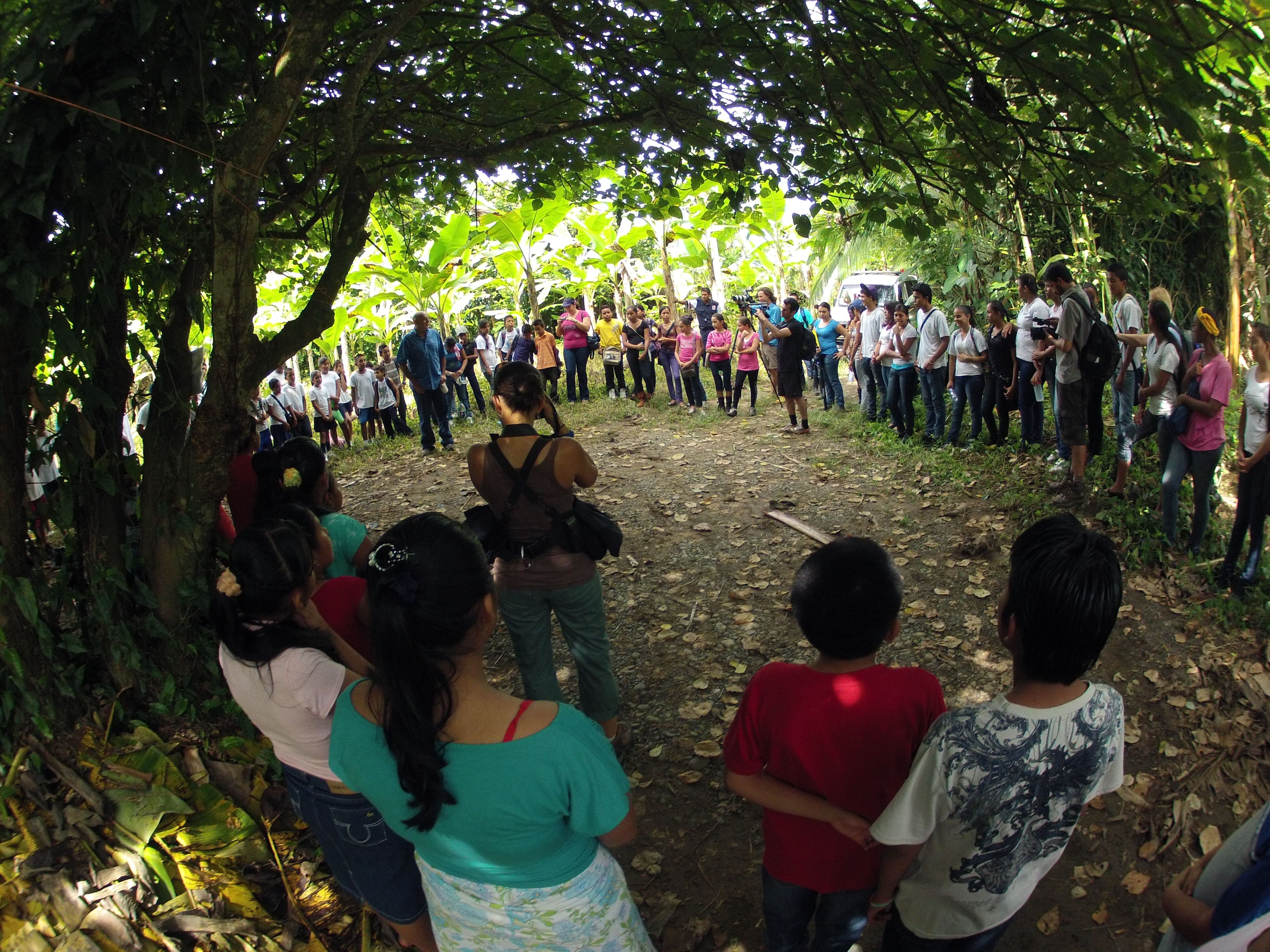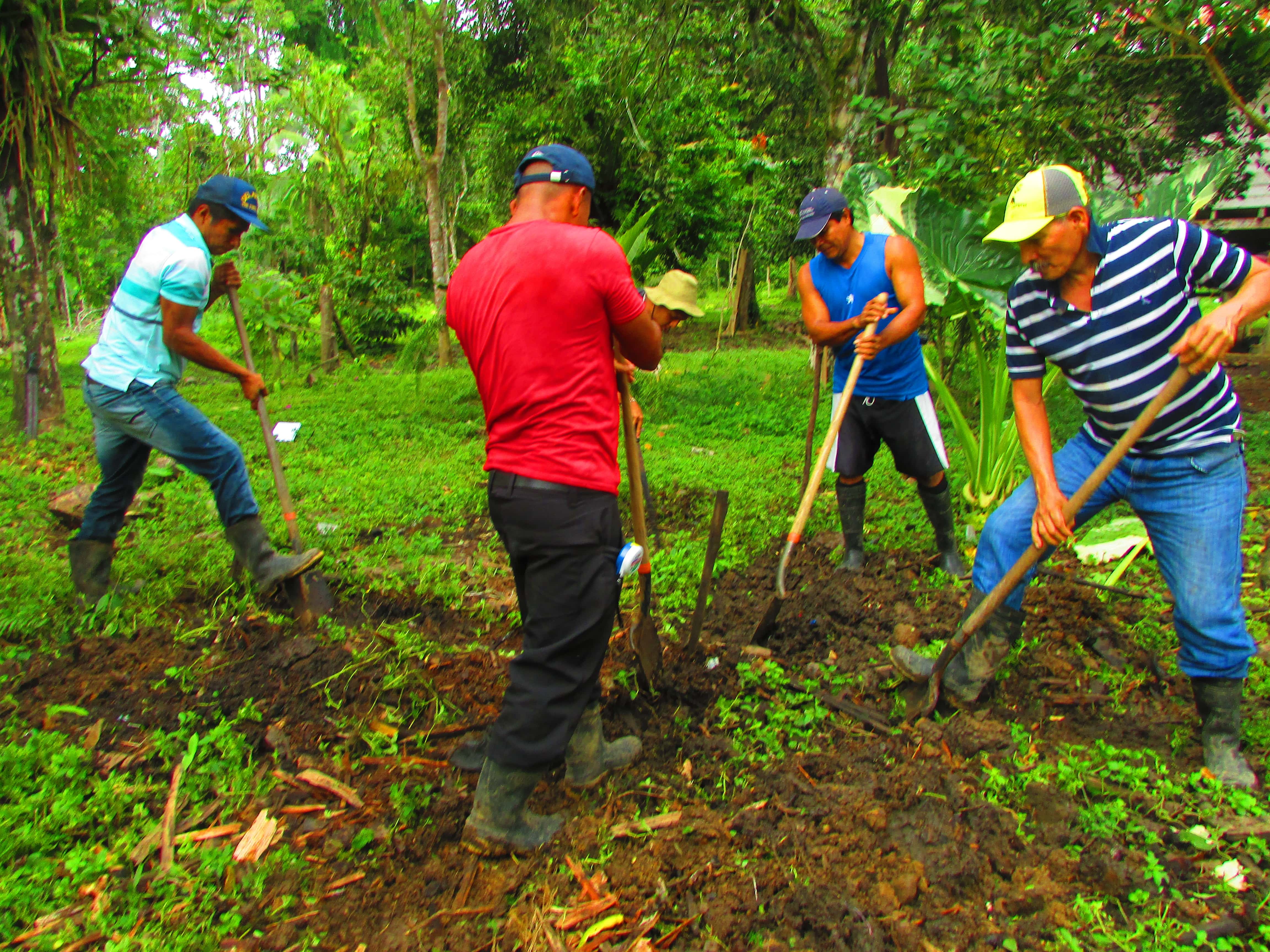Apprentissage par l'action" et suivi pour accroître les capacités et les connaissances
Travail sur le terrain avec la communauté
IUCN @ Paula Cruz
Présentation de l'école à la foire de l'agrobiodiversité
IUCN @ Pablo Cambronero
Éviter l'érosion des sols
IUCN @ Jeimy Carranza
En plus de former et d'aider les communautés à mettre en œuvre des mesures d'AEB par le biais de leurs pratiques productives, l'objectif est de produire des preuves des avantages de ces mesures et de créer les conditions nécessaires à leur durabilité et à leur extension.
- La vulnérabilité socio-environnementale de sept communautés du bassin de la rivière Sixaola est examinée afin d'identifier et de hiérarchiser les mesures d'atténuation des effets du changement climatique.
- Des diagnostics sont réalisés (productifs, socio-économiques et agro-écologiques) afin d'identifier les familles qui s'engagent à transformer leurs exploitations et de sélectionner celles qui ont le plus grand potentiel pour devenir des exploitations intégrales.
- Un soutien technique est apporté aux communautés, complété par des connaissances traditionnelles, afin de garantir que les mesures d'AEB contribuent à la sécurité alimentaire et hydrique.
- Des échanges et des formations sont organisés pour les producteurs (hommes et femmes), les autorités autochtones, les jeunes et les municipalités sur le changement climatique, la sécurité alimentaire, la gestion des ressources naturelles, les engrais organiques et la conservation des sols.
- Le suivi et l'évaluation sont effectués pour comprendre les avantages des mesures d'EbA et informer sur la mise à l'échelle horizontale et verticale.
- Les activités, telles que la foire de l'agrobiodiversité et les événements binationaux de reboisement, sont menées en collaboration avec les acteurs locaux.
- Les années de travail de l'UICN et de l'ACBTC avec les communautés locales ont été un facteur clé pour garantir des processus de participation efficaces et inclusifs, atteindre un niveau élevé d'appropriation des mesures d'EbA et responsabiliser les parties prenantes (dans ce cas, les producteurs, les groupes communautaires, les municipalités et les ministères).
- L'accord binational entre le Costa Rica et le Panama (datant de 1979 et renouvelé en 1995) facilite le travail au niveau binational et la coordination intersectorielle, et approuve la Commission binationale pour Sixaola qui fonctionne depuis 2011.
- L'autodiagnostic des vulnérabilités face au changement climatique (dans ce cas, par le biais de la méthodologie CRiSTAL) est un outil puissant qui permet aux communautés de hiérarchiser ensemble les priorités les plus urgentes et les plus importantes et d'obtenir de plus grands bénéfices collectifs.
- L'application de l'approche de "l'apprentissage par l'action" au niveau communautaire permet de mieux comprendre les multiples concepts liés à l'EbA et de créer une communauté de pratique qui valorise et s'approprie les mesures d'adaptation.
- Il est important de reconnaître la complémentarité entre les connaissances scientifiques et traditionnelles pour la mise en œuvre des mesures d'EbA.



